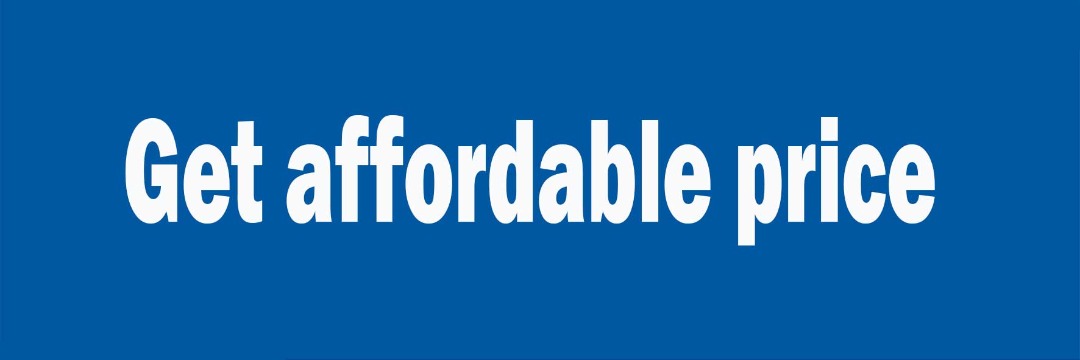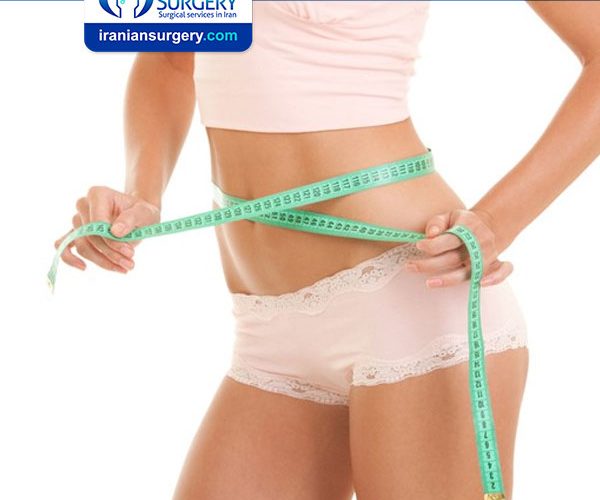Nonsurgical Fat Reduction
What is non surgical fat removal?
If you decide to have a Nonsurgical Fat Reduction in Iran, reading this article can improve your knowledge about Nonsurgical Fat Reduction cost in Iran to a great extent and help you to choose the best city and hospital to undergo Nonsurgical Fat Reduction in Iran.
In this article we provide you with a comprehensive description of Nonsurgical Fat Reduction in Iran and Nonsurgical Fat Reduction cost in Iran.
General information about cryolipolysis (also called coolsculpting) in Iran
The following table describes general information about cryolipolysis (coolsculpting) in Iran including coolsculpting cost in Iran, recovery time, and to name but a few.
| General Information | |
| Cost | $ 100- 200 per probe |
| Anesthesia | No |
| Hospital Stay | No |
| Back to Work | The same day |
| Duration of Operation | 1-3 Hours |
| Minimum Stay in Iran | 1 to 2 Days |
About Iranian Surgery
Iranian surgery is an online medical tourism platform where you can find the best nonsurgical fat reduction doctors. The price of a nonsurgical fat reduction in Iran can vary according to each individual’s case and will be determined based on treatment area, size of the area being treated and an in-person assessment with the doctor. So if you are looking for nonsurgical fat reduction cost in Iran, you can contact us and get free consultation from Iranian surgery.
Read more about : Lipomatic
Read more about : Liposuction vs coolsculpting
Read more about : Bariatric surgery
What is Nonsurgical Fat Reduction?
Nonsurgical fat reduction also known as noninvasive body contouring is a procedure that uses specialized equipment to create a controlled injury to small volumes of fat. Currently, there are two types of devices used for nonsurgical fat removal: ultrasound and cold energy or cryolipolysis. Both allow outpatient treatment resulting in efficient and consistent fat reduction as well as enhanced body contour.
Before Nonsurgical Fat Reduction
When to consider Nonsurgical Fat Reduction
. If you are struggling with pockets of fat that are resistant to diet and exercise programs.
. If you have undesirable but limited fat deposits on your abdomen, flanks, back or thighs.
. If you wish to achieve a trimmer appearance without having to undergo surgery.
How do I prepare for a nonsurgical fat reduction procedure?
Your surgeon will provide you with pretreatment instructions and answer any questions that you may have.
In advance of your procedure, your surgeon will ask you to:
. Stop smoking before undergoing treatment to promote better healing.
. Avoid taking aspirin, certain anti-inflammatory drugs and some herbal medications that can cause increased bleeding.
. Regardless of the type of procedure to be performed, hydration is very important before and after treatment for safe recovery.
Nonsurgical fat reduction is usually performed on an outpatient basis. Be sure to arrange for someone to drive you home after treatment and stay with you at least the first night following treatment.
What can I expect on the day of nonsurgical fat reduction treatment?
Nonsurgical fat reduction is performed on an outpatient basis. Most nonsurgical fat reduction sessions take less than an hour to complete but may take up to several hours.
. Medications may be administered for your comfort during the procedure.
. Your surgeon will follow the treatment plan discussed with you.
. After your procedure is completed, you will be able to return home and resume your normal activities.
Are you a good candidate for nonsurgical fat reduction?
Following are some common reasons why you may want to consider nonsurgical fat reduction:
. You are in relatively good shape but have modest bulges of fat on your abdomen, flanks, back or thighs that you’d like removed.
. You have pockets of fat that are resistant to diet and exercise.
. You wish to achieve a trimmer look without having to undergo an invasive surgical procedure.
It is important to note that nonsurgical fat reduction is not a weight loss treatment. This procedure is best suited for treating very limited volumes of fat of the abdomen, flanks, back and thighs. Because larger volumes of fat require multiple nonsurgical treatments, liposuction is probably a better option for larger fat accumulations.
If you are in good general health and have a positive attitude and realistic expectations, you are most likely a good candidate for this procedure.
What are the Advantages and Disadvantages of Nonsurgical Fat Reduction?
Pros:
. Effective in diminishing stubborn areas of unwanted body fat.
. Outpatient treatment with little to no downtime and minimal discomfort.
. No incision required.
Cons:
. Multiple treatment sessions may be needed to produce satisfactory results.
. Small burns are extremely rare but have been noted with ultrasound devices.
. Temporary redness and numbness may occur.
These are the top three pros and cons to weigh when considering nonsurgical fat reduction. If you want to focus on those specifically unique to you, please consult with your aesthetic plastic surgeon.

Risks and Side effects
Fortunately, significant complications from nonsurgical fat reduction are infrequent. Your specific risks for nonsurgical fat reduction will be discussed during your consultation.
All procedures have some degree of risk. Some of the potential complications include:
. Infection and bleeding
. Allergic reactions
. Damage to underlying structures
. Mild to moderate pain
. Unsatisfactory results that may necessitate additional procedures
Other risks specific to nonsurgical fat reduction are outlined below:
. Temporary redness, bruising, tingling and tenderness.
. Temporary dulling of sensation or cramping.
. Itchiness, especially a few days after the procedure
. Muscle cramping
. Small burns are extremely rare but have been noted with the ultrasound devices.
You can help minimize certain risks by following the advice and instructions of your board-certified plastic surgeon, both before and after your nonsurgical fat reduction treatment.
During Nonsurgical Fat Reduction
Type of Nonsurgical Fat Reduction
What are different types of Nonsurgical Fat Reduction?
There are currently two types of devices used for nonsurgical fat removal: ultrasound and cold energy or cryolipolysis. Your board-certified plastic surgeon will determine what is best for you based on his or her experience, your body type and your cosmetic goals.
. Ultrasound
Think about ultrasound energy like sunlight. A magnifying glass can focus sunlight to ignite paper. Above and below the point of focus, paper does not burn. In a similar manner, by focusing ultrasound energy, only fat near the focus point is injured. Your skin (above the focus point) and tissue (below the focus point) are protected. Your body then slowly absorbs the damaged fat. One or more treatments may be needed.
. Cryolipolysis
This treatment disrupts fat using a form of controlled frostbite. Research has shown that during frostbite fat cells freeze before skin freezes. Cryolipolysis works in the same way, freezing fat but not your skin. The “frozen fat” dies and is absorbed by your body over time. One or more treatments may be needed depending upon the amount of fat to be eliminated.
Always consult with a board-certified plastic surgeon if you are considering a nonsurgical fat reduction procedure.
How is a nonsurgical fat reduction procedure performed?
Depending upon your needs, your surgeon may recommend one of the following treatment modalities:
Ultrasound
. Premedication is usually not needed.
. Your treatment areas are marked by your surgeon.
. A technician applies a thin layer of gel to your skin.
. The ultrasound transducer head is then moved over the treatment area. The same area may be treated more than once.
. Your session may last anywhere from a half hour to several hours.
Cryolipolysis
. The fatty area is sucked up into a handpiece between two metal plates and the area is slowly cooled.
. Current treatment guidelines are one hour per site.
After Nonsurgical Fat Reduction
Aftercare and Recovery
Nonsurgical fat reduction usually requires little, if any, recovery. For most patients, full activity may be resumed immediately. After the procedure, you and your caregiver will receive detailed instructions about your post-treatment care, including information about:
. Skin care
. Normal symptoms you will experience
. Potential signs of complication
Immediately after your nonsurgical fat reduction
You may notice temporary skin redness, swelling of the treated area and numbness of the area, but these side-effects usually resolve quickly. Some patients (especially those with larger treatment areas) may benefit from oral pain medication. It is important that you follow all patient care instructions provided by your surgeon.
Recovery time frame after nonsurgical fat reduction
You will be able to return to work and resume normal activity right away. You'll see noticeable fat reduction in the treated areas within one to two months following the procedure.
How long will the results last?
The results are permanent, because the adult body does not produce new fat cells. When you gain weight, your existing fat cells expand. Once fat cells are destroyed and removed from the body, you will not gain weight in the treated areas.
Nonsurgical Fat Reduction Surgeons
How can I find the best nonsurgical fat reduction doctors in Iran?
Nonsurgical fat reduction doctors in Iran can make your body more appealing. Nonsurgical fat reduction doctors in Iran can also help you in making your final decision about what type of nonsurgical fat reduction is more suitable for you.
It is important that you seek the assistance of experienced and skilled nonsurgical fat reduction doctors in Iran who have provided a suitable condition for people with limited budgets to undergo nonsurgical fat reduction in Iran easily. It is worth explaining that the quality provided by Iranian doctors is far higher than other countries including Turkey and India.
Read more about : Liposuction in Iran
Plastic surgery hospitals in Iran
Tehran hospitals
- Moheb Kosar Hospital
- Imam Khomeini Hospital
- Ebnesina Hospital
- Parsian Hospital
- Pasteurno Hospital
- Kasra Hospital
- Treata Hospital
Shiraz hospitals
- Mirhoseini Hospital
- Ordibehesht Hospital
- Mir Hospital
- MRI hospital
- Dena Hospital
- Abualisina Hospital
- Ghadir Mother and Child Hospital
Mashhad hospitals
- Imam Reza Hospital
- Mehregan Hospital
- Hashemi Nezhad Hospital
- Farabi Hospital
- Mehr Hospital
- Sina Hospital
- Bentolhoda Hospital
Nonsurgical Fat Reduction Cost in Iran
The price of nonsurgical fat reduction depends on the type of fat reduction that patients will undergo. For example the cost of cryolipolysis (Coolsculping) depends on four primary factors:
. The area of your body being treated – In general, the smaller the treatment area, the lower the cost.
. The number of treatment cycles – The number of cycles required to reach a desired outcome depends on your body type and how much fat needs to be removed. For example, fat reduction in the flanks usually requires one to three sessions, while the inner or outer thigh area may require multiple sessions.
. Your provider’s location – As with any cosmetic procedure, location plays into the price of CoolSculpting.
. Who performs the treatment – If a doctor performs your CoolSculpting treatment that will generally cost more than a medical assistant.
Understandably, treating multiple areas can also increase cost. To reach their ideal end result, a good number of people elect to treat multiple areas.
Results can be seen in 30-90 days, although some see changes in as little as 10 days, and it may take up to six months for the full effects to manifest. Many people are satisfied after a single treatment, but often a second treatment (or more) really brings out the sculpting of your body and reduction of fat in the problem area.
Read more about : Liposuction cost in Iran
Read more about : Tummy tuck in Iran



